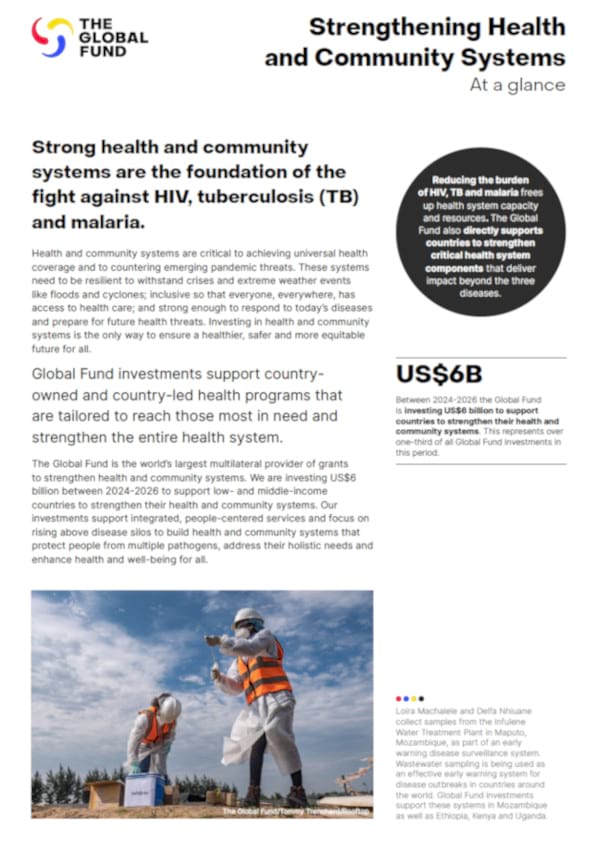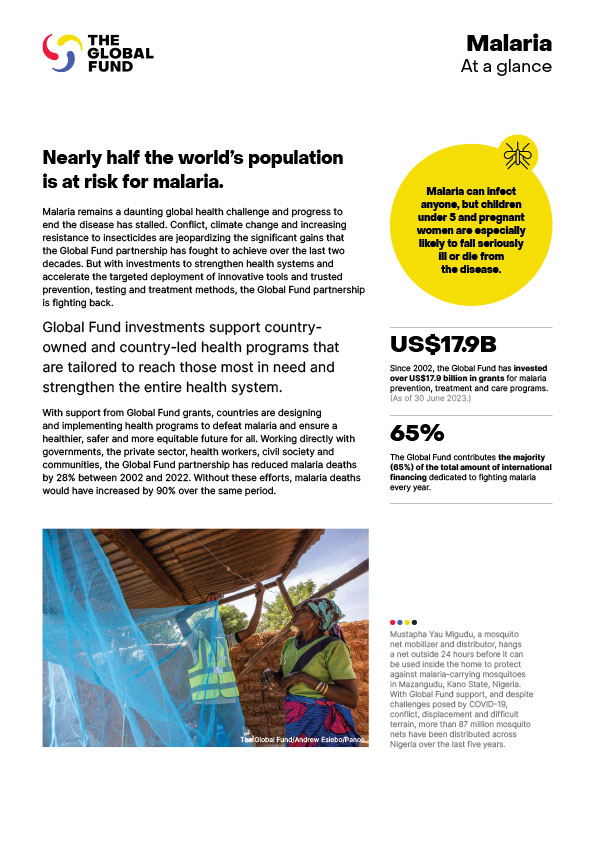Countries build their funding requests using the Global Fund’s modular framework, which sets out the key areas of programming for each of the three diseases and for building resilient and sustainable health systems. Each module is broken down into individual interventions, the associated budget and the indicators against which the program progress is to be measured.
This is translated into a performance framework at the funding request stage and, after further negotiations during the grant-making stage, forms a part of the grant agreement. The performance framework sets out what the grant is intended to achieve, how it should be measured, and the targets to be reached along the way.
The Global Fund offers a set of guidance materials on individual elements of the monitoring and evaluation framework, including:
Modular Framework Handbook and Core Set of Indicators
The Global Fund asks implementers to select their program indicators from a core list of indicators created with our partners. These indicators are drawn from the latest technical guidance and are based on commonly used measures, in order to promote a common understanding of monitoring and evaluation and to reduce the reporting burden for countries.
These indicators are included in the Modular Framework Handbook. They include impact, outcome and coverage indicators at the national level.
- Modular Framework Handbook 2023-2025
download in English | Español | Français - Modular Framework Handbook 2020-2022
download in English
Implementers may also find it useful to review the indicator guidance sheets for more detailed information to assist with data collections and reporting on the HIV, TB and malaria indicators outlined in the handbook.
- HIV Indicator Guidance Sheet (2023-2025)
download in English | Español | Français - Tuberculosis Indicator Guidance Sheet (2023-2025)
download in English | Español | Français - Malaria Indicator Guidance Sheet (2023-2025)
download in English | Español | Français - Resilient and Sustainable Systems for Health Indicator Guidance Sheet (2023-2025)
download in English | Español | Français
Monitoring and Evaluation Plan
A monitoring and evaluation plan sets out how implementers intend to collect, collate, analyze and report on the data resulting from programs. The monitoring and evaluation plan will contain detailed information on:
- Indicators
- Data management
- Data quality assurance
- Evaluations
- Monitoring and evaluation coordination
- Capacity building for monitoring and evaluation
- Budget and workplan for monitoring and evaluation.
The monitoring and evaluation plan should also include (and budget for) activities to strengthen the national monitoring and evaluation system. Historically, the Global Fund has encouraged countries to dedicate between 7 and 10 percent of the grant budget to monitoring and evaluation.
Countries will submit their monitoring and evaluation plan at the time of grant signing, and this plan will serve to monitor the national disease or health systems strategy to which the grant is contributing.
In general, a monitoring and evaluation plan should be a national plan – i.e. it should go further than simply the programs supported by the grant. In cases where the national monitoring and evaluation plan has not been developed in sufficient detail, the Global Fund will request complementary information from the country.
In instances where a country does not have a national monitoring and evaluation plan, we will consider (on an exceptional basis) a grant-specific monitoring and evaluation plan, based on confirmation that any governmental Principal Recipient will be developing a national plan.
The data provided by national monitoring and evaluation systems is critical to informing decision-making on the part of both implementers and funders. The guidelines below provide information on the main elements that contribute to a robust monitoring and evaluation system.
- Monitoring and Evaluation Plan Guidelines
download in English - Annex E - Workplan and Budget Template
download in English - Measurement Guidance for Global Fund Supported HIV Prevention Programs
download in English - Measurement Framework for Advancing Equity, Gender Equality and Human Rights
download in English - HIV Surveillance Options for Key and Vulnerable Populations in Global Fund Grants - Guidance Note
download in English - Optimizing HIV Prevention Reach for Key Populations - Briefing Note
download in English







